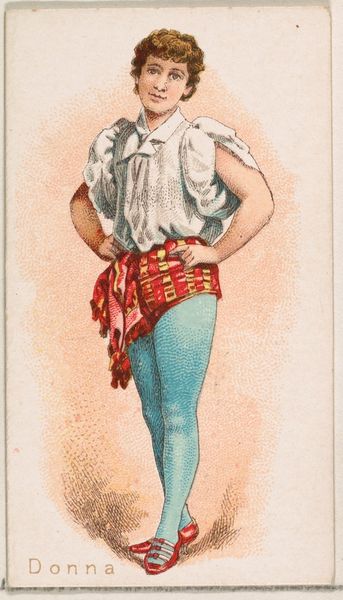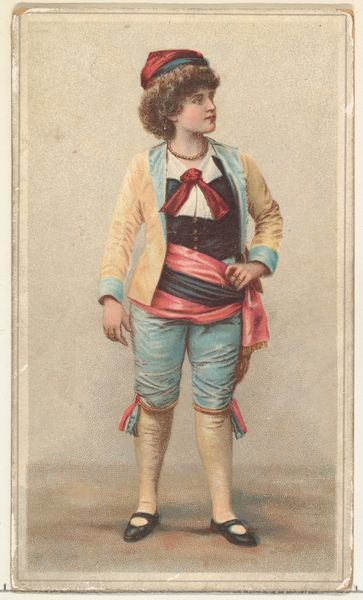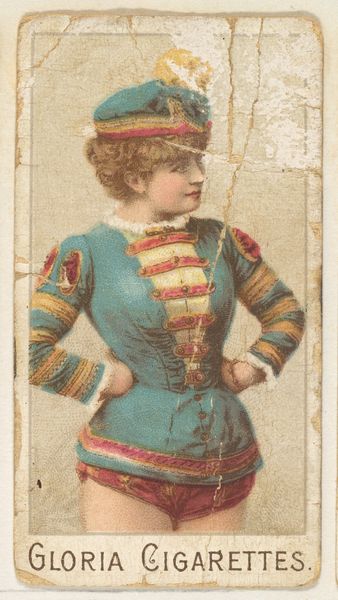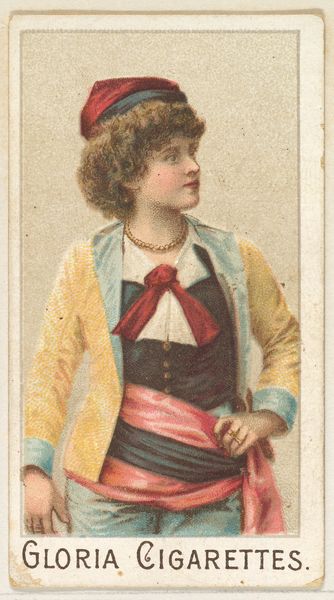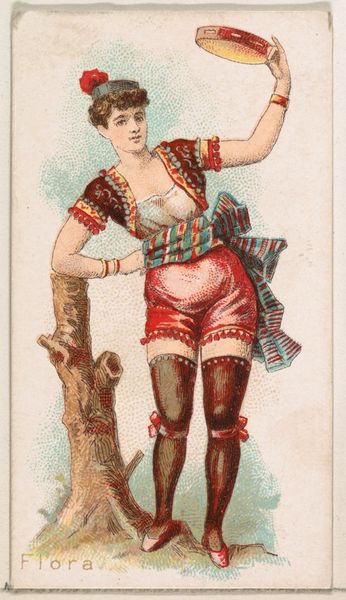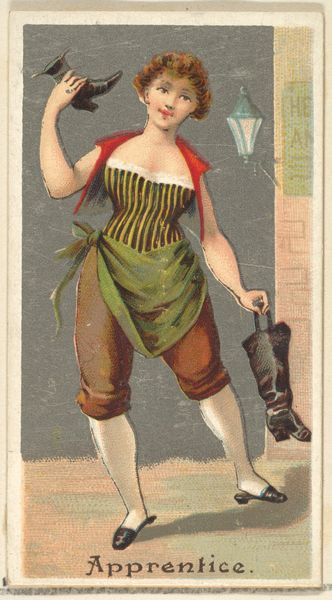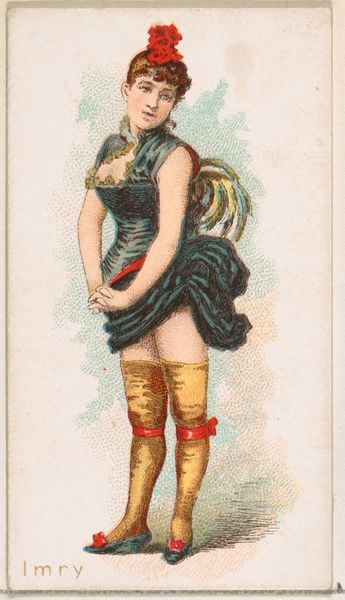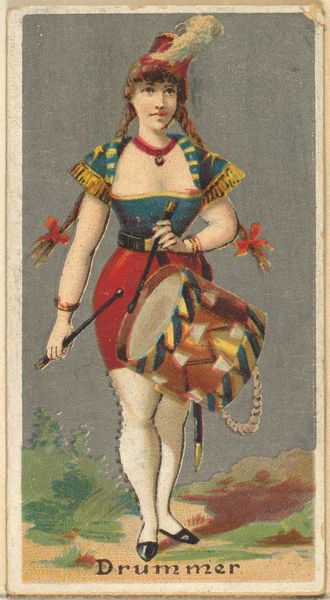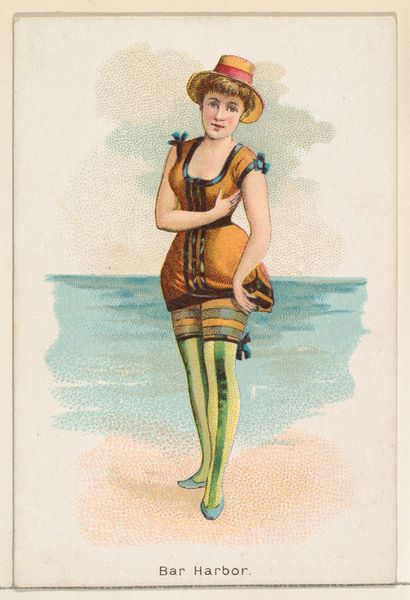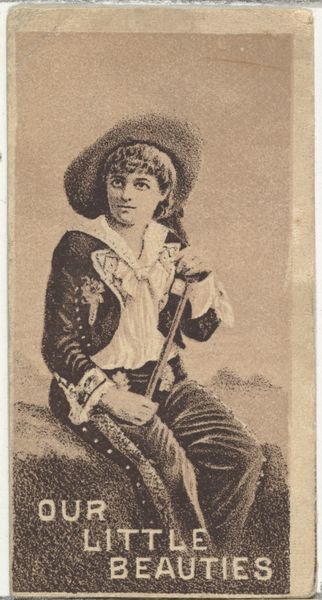
Actress wearing costume with wide sash and holding long rope, from Stars of the Stage, Second Series (N130) issued by Duke Sons & Co. to promote Honest Long Cut Tobacco 1891
0:00
0:00
Dimensions: Sheet: 4 1/8 × 2 7/16 in. (10.5 × 6.2 cm)
Copyright: Public Domain
Editor: This is "Actress wearing costume with wide sash and holding long rope," a print from 1891 by W. Duke, Sons & Co. It’s quite striking, this almost theatrical portrait of a woman, but her confident pose and somewhat masculine clothing present an interesting dichotomy. How do you interpret this work, especially considering its origins in tobacco advertising? Curator: It’s fascinating how commercial imagery can become such a potent lens through which to examine social norms. The figure is indeed posed in what might then have been a “masculine” stance, and her attire, while theatrical, departs from typical feminine ideals. Considering this was promotional material, how might this image of an actress – someone already in a liminal space between reality and performance – have been received by its target audience? Editor: Perhaps it offered a glimpse into alternative modes of femininity, even if unintentionally? The actress is assertive, not necessarily demure. Curator: Exactly. The “New Woman” archetype was emerging in the late 19th century. She sought education, financial independence, and a voice in the public sphere. Could this image, distributed with tobacco products, subtly champion such ideals or, conversely, exploit the allure of this unconventional woman to sell their product? And, does the rope, so prominently displayed, function as a symbol of control, freedom, or something else entirely? Editor: I hadn't thought of the “New Woman” context, that adds a whole new dimension. It makes me question whether the company intentionally tried to represent a shift in gender roles or if they just tried to capture a trend. Curator: Precisely. And that's the crux of it. We’re left to ponder the intentions and the reception. How does the act of viewing this image today, with our contemporary understanding of gender and representation, change the original context? Editor: That’s true; the dialogue continues, even centuries later. I appreciate learning to consider the societal implications of commercial art – there's so much more to it than just aesthetics. Curator: Indeed. And by questioning these images, we engage with a vibrant conversation about identity, power, and representation that is, ultimately, still relevant today.
Comments
No comments
Be the first to comment and join the conversation on the ultimate creative platform.


